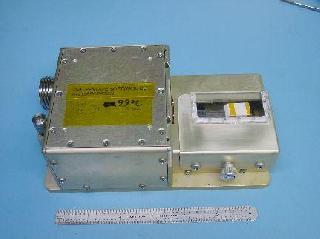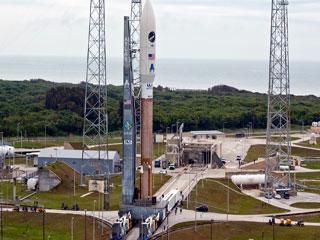
LMM/CVB Qualification Model # 2. A NASA photo
MOFFETT FIELD, CALIFORNIA (BNS): NASA is testing a new multi-capability microscope on the International Space Station which will allow real-time study of the effects of the space environment without the need to return samples to Earth.
Any living specimens returned to Earth must endure the effects of re-entry through the atmosphere. The ability to use the Light Microscopy Module (LMM) on station will enable scientists to study data unaffected by re-entry, NASA said.
The microscope is isolated from vibrations on the station, allowing it to obtain clear, high-resolution images. Using high-resolution magnification, scientists can examine microorganisms and individual cells of plants and animals, including humans.
"We really need to maximize life science investigations conducted on the International Space Station," said Jacob Cohen, principal investigator of the technology demonstration and a researcher at NASA's Ames Research Center, Moffett Field, California.
"It's really amazing to be able to remotely manage, optimize and troubleshoot experiments observed with a microscope in space without the need to return the samples back to Earth. This microscope is helping fulfill the vision of a true laboratory in space," he said.
The biological samples for the LMM launched on space shuttle Discovery's STS-133 mission on February 24.
They include eight fixed slides containing yeast; bacteria; a leaf; a fly; a butterfly wing; tissue sections and blood; six containers of live C. elegans worms, an organism biologists commonly study; a typed letter "r" and a piece of fluorescent plastic.
The wing is from a previous study, Butterflies in Space, involving students from around the country, and flown on STS-129 in 2009.
Some of the worms are descendants of those that survived the space shuttle Columbia (STS-107) accident; and others are modified to fluoresce. Scientists commonly attach green, yellow and red florescent proteins to study gene expression.
NASA’s Ames and Glenn research centre developed and manages the LMM. Scientists and engineers at Glenn Research Center in Cleveland modified the commercial microscope in the LMM with 23 micro motors and cameras to allow remote control operations.
 Previous Article
Previous Article Next Article
Next Article













The Indian Air Force, in its flight trials evaluation report submitted before the Defence Ministry l..
view articleAn insight into the Medium Multi-Role Combat Aircraft competition...
view articleSky enthusiasts can now spot the International Space Station (ISS) commanded by Indian-American astr..
view article